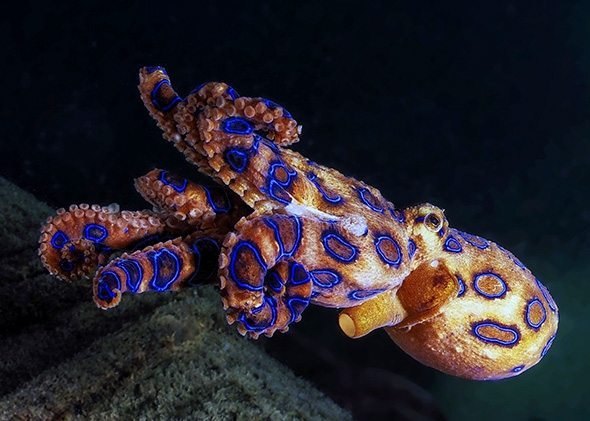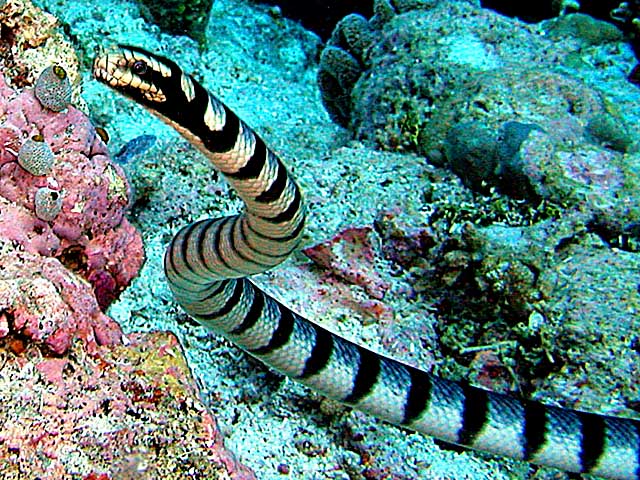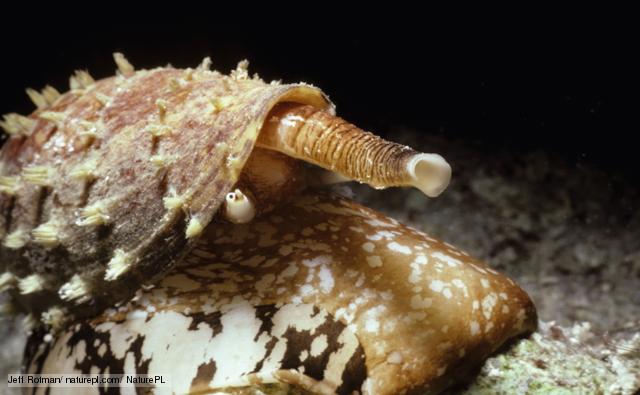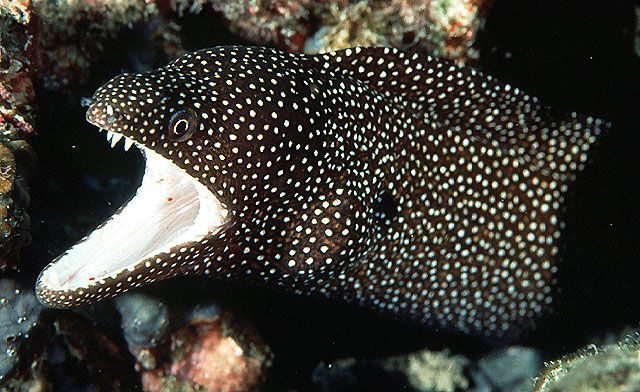Last Updated on July 9, 2024 by Snorkel Ken

There is nothing better than a quick loop in clear, warm tropical waters with a vibrant and busy reef below. While a number of the tropical fish and other marine life found in reefs around the world are harmless, there are a few creatures that you definitely want to keep your distance from while snorkeling in their domain. While every snorkeler knows better than to get too crazy in shark-infested water, sometimes the most dangerous sea creatures are the ones you would least expect.
Lionfish

In coral reefs, the lionfish is near the top of the food chain. They will eat anything to satisfy their food lust, but are rarely prey for anything else thanks to its great defense mechanism. Located along the frilly dorsal fins of the lionfish are venomous spikes that make this predator pretty hard to handle. The venom from these spikes is rarely fatal, but it causes extreme pain, sweating, nausea, and convulsions.
While native to the Indo-Pacific region, its lack of natural predators has seen the lionfish become an invasive species to reefs after being introduced to the Caribbean and Atlantic.
Irukandji Jellyfish

Jellyfish are always cause for concern, and reported sightings of them in the water is a pretty good reason to cancel a snorkeling trip. However, some jellyfish you might not even see until it is too late. The irukandji is the smallest species of jellyfish, but its sting packs the most punch. The venom is so powerful that its effects have come to be known as Irukandji Syndrome, which features kidney pain, profuse sweating, vomiting, and psychological feelings like that of impending doom. Those who have endured the relatively mild sting often cite the symptoms that occur several hours later as the worst pain they have had in their life.
While the irukandji are commonly found off the coasts of Australia, they have also been found in Malaysia, Japan, Florida, and as far north as Britain. If you see a beach with posted signs or hear an irukandji warning on the local news, it is best to stay on land.
Blue-Ringed Octopus

The blue-ringed octopus, like other octopi, is often found in tidal pools, but they also make their home in shore reefs in the Indian and Pacific Oceans. Contrary to their small size and rather intriguing look, this octopus is actually one of the deadliest marine creatures in the sea. Their primary defense is a tiny bite from the beak underneath their tentacles. It leaves, at most, a slight laceration, but the venom it injects is enough to kill a human. The worse part? There is no antivenom for it.
Thankfully, the blue-ringed octopus isn’t aggressive and often has a live and let live mentality. Just don’t get to close or try to mess with it.
Indonesian Needlefish

The Indonesian needlefish isn’t dangerous because of its painful venom or sharp teeth, it is dangerous because of its speed. These fish share prime real estate with snorkelers, sitting in the first few inches of water. Their sleek shape and needle-like nose allow them to rocket themselves out of the water and spear prey at speeds up to 37 miles per hour. With it growing up to three feet and traveling at such speeds, these fish have occasionally produced some horrific results.
Typically their victims are just in the way of something the needlefish wants to eat, with the majority of accidents happening while night fishing. Needless to say, make sure to shoo any needlefish away in Indonesia while snorkeling in case they decide to let loose suddenly.
Stonefish

If you frequently snorkel near the reefs off Australia and Southeast Asia, you might have paddled right past a number of stonefish without even realizing it. However, if you happen to find one with your feet or hands in the sand, you definitely won’t forget it.
The stonefish, like its name suggests, hunts prey by blending in with its surroundings. Once settled in, it is near impossible to tell a stonefish apart from your average stone. While the stonefish doesn’t hunt humans, it does raise a number of spines from its dorsal fins when threatened. These spines also inject a series of neurotoxins that not only cause extreme pain, but temporary paralysis and then shock, which can be fatal without the antivenom.
Sea Snakes

Unlike the many harmless land snakes, all sea snakes have potent venom for defense and to catch their prey. However, they typically prefer not to waste it on any passing humans unless they feel very threatened by your proximity. Sea snakes are typically found near coastlines in warmer waters, making their habitat frequently overlap with many good snorkeling spots. While the two most venomous species of snakes are found off the coasts of Asia and Australia, if you keep a good distance from this often brightly-colored sea creature, it is a situation that works best for everyone.
Cone Snails

Throughout the reefs of the world, there are 800 different species of cone snails that make their home in the sand. However, while their beautiful textile-patterned shells are popular for jewelry-making, if you catch a cone snail alive, you will regret it.
A cone snail catches its prey by skewering fish with an elongated barbed tooth. While some do not have venom, many do, particularly the larger species. For many venomous species, it can feel like a simple bee sting, but throughout the world 15 deaths have been attributed to grabbing a living cone snail.
Striped Surgeonfish

The striped surgeonfish is one of the most beloved and attractive fish that populate the reefs in the Indo-Pacific region. However, while beautiful to look at, you don’t want the striped surgeonfish to get too close. The caudal spine along their tail is not just used for swimming, but for its defense as well. Lined with venomous spines, it is estimated the 50,000 divers and snorkelers are injured by them per year. Why typically not deadly, the venomous does cause incredible pain.
Sea Anemone

The sea anemone looks like a beautiful underwater flower, its petals wafting in the ocean currents, but they are actually living, predatory creatures. The sea anemone uses venom-laden tentacles to stab any tasty-looking fish that swim by for dinner with a paralyzing neurotoxin. You definitely don’t want your hand or foot to be mistaken as a tasty fish by getting too close, much like a sea urchin.
Moray Eels

There are around 200 different species of moray eel that call reefs in tropical waters home, and while they look menacing, moray eels aren’t actually that threatening to humans. The real danger of a moray eel is when snorkelers try to feed them. With their tough-looking mug and lightning fast reflexes, watching a moray feed is often a thrill, but a dangerous one. These creatures are unbelievably fast with sharp teeth and surprisingly powerful jaws, and more than a few unlucky folks have lost fingers by feeding and underestimating this eel.









